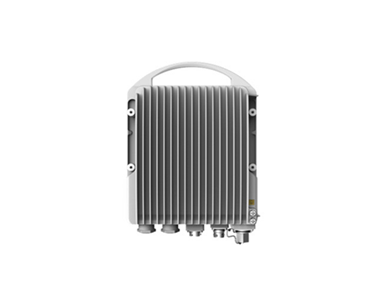RTN 310
-
Model:
RTN 310 -
Detail:
Huawei optix RTN 310 microwave radio links -
Price:
Request For Quotation
- Free Technical Support
- Product Quality Protection
- On-time Shipment
- +86 755 8215 3862
- leo@uonel.com
- ywx39894
|
Item |
RTN 310 Housing an SHXA2 Board |
RTN 310 Housing an SXA3 Board |
|---|---|---|
| Frequency band | 13 GHz, 15 GHz, 18 GHz, 23 GHz, and 38 GHz | 26 GHz, 28 GHz, and 32 GHz |
| Power supply mode | PoE or DC | PoE |
| Service port | One GE optical port + one GE electrical port, or two optical ports | Two GE optical ports + one GE electrical port |
Application
The RTN 310 is used to provide transmission solutions with low network construction cost for mobile communication networks and private networks.
Compared with the traditional split microwave equipment, the RTN 310 integrates all its functions in an outdoor chassis, thereby implementing zero footprint installation. Therefore, the RTN 310 can provide carriers with full-outdoor radio transmission solutions with low network construction cost and operating expense.
The RTN 310 supports flexible networking.RTN 310s can form ring or chain backhaul networks for various IP base stations on existing or new networks.
The RTN 310 supports 1024 Light, XPIC, PLA, and 1+1 HSB/FD/SD. It can provide high-bandwidth backhaul links for high-capacity 3G/LTE base stations.
- RTN 310 independently form tree or ring backhaul networks to provide links with high capacity, bandwidth, and reliability for 3G/LTE base stations.
- The RTN 310 works with the existing OptiX RTN 900 to provide multi-directional aggregation sites and more functions.
- The RTN 310 works with the ATN to provide a microwave channel solution for transparent transmission on the IP RAN.
Main specifications of the RTN 310
Item Specifications Appearance Microwave type IP microwave over native Ethernet Frequency bands 26/28/32 GHz Channel spacings 7/14/28/40/56 MHz Modulation schemes QPSK Strong/QPSK/16QAM Strong/16QAM/32QAM/64QAM/128QAM/256QAM/512QAM/512QAM Light/1024QAM/1024QAM Light/2048QAM NOTE:The difference between strong/light modulation schemes and normal modulation schemes lies in FEC encoding parameters. Strong modulation schemes have stronger error correction capabilities, which result in higher receiver sensitivity but lower air interface bandwidth. Light modulation schemes have poorer error correction capabilities, which result in lower receiver sensitivity but higher air interface bandwidth.RF configuration modes - 1+0 configuration
- 2+0 configuration
- 1+1 HSB/FD/SD configuration
- Multi-directional site configuration
- XPIC configuration
Channel configuration modes - ACAP
- ACCP
- CCDP
AM Supported ATPC Supported Ethernet frame header compression Supported PLA Supported LLDP Supported Service ports - Two FE/GE optical ports
- One GE electrical port, which provides the PoE function
Service types Ethernet services:
- E-Line services based on port, port+VLAN, port+QinQ
- E-LAN services based on IEEE 802.1D, IEEE 802.1Q, and IEEE 802.1ad bridges
Clock features - Supported clock sources:1588v2 time synchronization
- Microwave link clock
- Synchronous Ethernet clock
Power supply modes PoE (power supply through the PI, Dock, or other PSE equipment)
Chassis dimensions (H x W x D) 210 mm x 210 mm x 90 mm Antenna Single-polarized antennas and dual-polarized antennas with a diameter of 0.3 m to 1.2 m as well as the corresponding antenna feeder accessories







